No matter what field you study, an accurate knowledge of its vocabulary is essential to understanding the subject. In the field of vacuum heat treatment, considerable emphasis is placed on the proper use, meaning, and interpretation of certain words or phrases. A brief summary of the terminology including common processes being run is presented below.
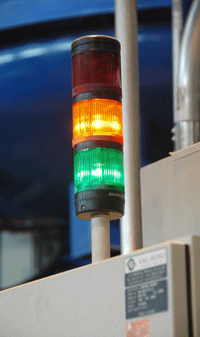 Absolute pressure – Pressure measured above the zero value of a perfect vacuum. It is designated psia (pounds per square inch absolute).
Absolute pressure – Pressure measured above the zero value of a perfect vacuum. It is designated psia (pounds per square inch absolute).
Absolute zero – The point at which atomic motion stops. The zero point on the absolute temperature scale (0°K).
Absorption – The binding of gas in the interior of a solid (or liquid).
Adsorbate – A material that takes in gas by adsorption.
Adsorption – The condensing of gas on the surface of a cooled solid.
Air-inlet valve – A valve used for letting atmospheric air into a vacuum system or chamber. It is also called a vacuum break or vent valve.
Alloy – The addition of other elements to a pure metal. Examples include steel (iron plus carbon, manganese and possibly, other elements), brass (copper plus zinc), bronze (copper plus tin), solders (tin plus lead and possibly other elements) and nickel-silver (copper plus nickel and zinc).
Angle valve – A valve in which the inlet and outlet are at right angles to one another.
Annealing – Heating above the critical (Ac1) temperature and holding at a suitable temperature followed by cooling at a suitable (slow) rate for purposes such as reducing hardness, improving machinability, facilitating cold working, producing a desired microstructure (for subsequent operations), reducing internal stresses, or for obtaining desired mechanical, physical or other properties. Cooling is often performed in the furnace. Other common names and related subjects include black annealing, intermediate annealing, isothermal annealing, malleablizing, process annealing, quench annealing, recrystallization annealing and spheroidizing.
Anti-backstreaming valve – A valve or other device that prevents the migration of oil and air from a mechanical vacuum pump into the system when the pump stops and the system is under vacuum.
Atmospheric pressure – The pressure exerted by a mercury column 760 mm high at 0ºC under a standard acceleration of gravity (980.665 cm/sec2); 14.7 psi at sea level.
Avogadro law – One of the gas laws. The Avogadro law states that equal volumes of different gases at the same pressure and temperature contain the same number of molecules.
Backstreaming – The backward flow of the working fluid of a pump upstream toward the vessel being evacuated.
Baffle – A system of cooled surfaces placed near the inlet of a pump to condense backstreaming vapor and return it to the pump.
Bakeout – The heating of a system to drive out adsorbed or absorbed gases to accelerate outgassing.
Ball valve – A valve whose disk consists of a drilled ball which rotates to allow or cut off flow.
Base pressure – Lowest pressure a pump can produce; also, the lowest pressure to which a system can be pumped.
Belt-drive pump – A pump with the motor drive and pulley system attached to the pump shaft. The ratios of the diameters of the pump and motor pulleys determine the actual rotational speed of the pump.
Boyle’s Law – One of the gas laws. Boyle’s law states that pressure and volume in a gas are inversely proportional (assuming constant temperature and mass).
Braze alloy – An alternative term for the brazing filler metal (BFM).
Braze joint – The junction of members or the edges of members that are to be bonded or have been bonded by brazing.
Brazing – Joining of materials by flowing a nonferrous filler metal into the space between them via capillary action. Bonding results from the intimate contact produced by dissolution of a small amount of base metal into the molten filler metal, without melting of the base metal. The term brazing is used when the filler metal has a liquidus temperature of 450ºC (840ºF) or higher.
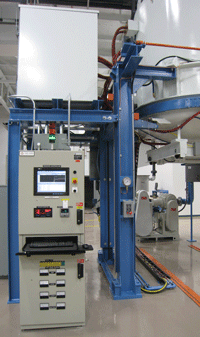 Calibrated leak – A leak whose value is variable; used for measurements and in leak detection.
Calibrated leak – A leak whose value is variable; used for measurements and in leak detection.
Carbonitriding – The introduction of carbon and nitrogen into a solid ferrous alloy by holding above the temperature at which austenite begins to form – the critical (Ac1) temperature of the material in contact with a suitable source of carbonaceous material and ammonia. The carbonitrided alloy is usually quenched to harden the case.
Carburizing (aka Vacuum Carburizing, Low Pressure Carburizing, LPC) – The introduction of carbon into a solid ferrous alloy by holding above the temperature at which austenite begins to form – the critical temperature (Ac1) of the material in contact with a suitable source of carbonaceous material, which may be solid, liquid or gas. The carburized alloy is usually quench hardened.
Carburization – A process that increases the carbon content of a steel surface.
Case hardening – Hardening a ferrous alloy so that the outer portion, or case, is made substantially harder than the inner portion, or core. This is accomplished by increasing the surface carbon content and quenching or by selectively hardening the surface using applied energy techniques (flame, induction, laser).
Charles’ law – One of the gas laws. Charles’ law states that pressure and temperature in a gas are directly proportional (assuming constant temperature and mass).
Chevron seal – A motion seal using a V-shaped gasket.
Cold trap (condenser) – A trap designed to hold a refrigerant, or cooled by coils in which a refrigerant circulates, inserted into a vacuum system for vapors present in the system to condense on.
Cold wall – A style of vacuum furnace in which the exterior vacuum-vessel wall is cooled by use of a liquid (e.g., water or a water-glycol mixture).
Compression ratio – The ratio between the outlet pressure and the inlet pressure of a pump for a specific gas.
Compound pump – A mechanical pump having two or more stages of compression.
Condensation – Change of phase from vapor to solid or liquid.
Condensation rate – The number of molecules that condense on a surface per cm2/sec (feet2/sec).
Conductance – The actual capacity of a piping system in cubic meters (feet) per minute. Conductance in a vacuum system can be limited by line size and configuration.
Continuous Vacuum – A style of vacuum furnace in which the workload is conveyed through the furnace. Multiple loads are typically inside these types of furnaces at one time, and different processing conditions are possible.
Crystalline – A material consisting of particles arranged in a repetitive pattern is regularly known as crystalline. The atoms are arranged in fairly simple geometric patterns in all metals and metal alloys.
Dalton’s law – A gas law that states that in a mixture of gases in which the gases do not react chemically, each gas exerts its own pressure independently of the other gases.
Degassing – The removal of gas and vapors from a substance under vacuum.
Dewar (aka Dewar Flask) – A double walled insulated container in which a vacuum is maintained between the inner and outer walls of the vessel.
Diffusion bonding – A process by which two materials in contact with one another are joined by diffusion of atoms between the two materials.
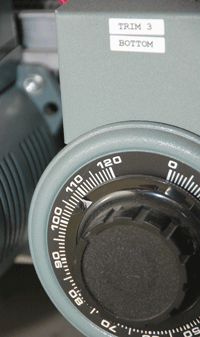 Diffusion pump – A vacuum pump that uses an oil vaporizing/condensing action at low pressure to entrap gas molecules from the vacuum chamber and exhaust them from the system.
Diffusion pump – A vacuum pump that uses an oil vaporizing/condensing action at low pressure to entrap gas molecules from the vacuum chamber and exhaust them from the system.
Direct-drive pump – A pump with the motor drive provided by a direct coupling to the pump rotor shaft. The rotational speed of the motor is the rotational speed of the pump.
Displacement – The geometric volume swept out per unit time by the working mechanical pumps at normal rotational speeds. It is also called free-air displacement. This value, being theoretical, is not usable by end-users. It is mainly a standard used by vacuum-pump manufacturers.
Double pump-down – A technique used to improve overall pump-down rate by first evacuating the vacuum vessel to a preset vacuum level, backfilling the vessel to near atmospheric pressure with an inert gas and again evacuating to remove unwanted gaseous species from the chamber.
Ejector pump – A vapor pump having a boiler pressure of more than a few torr and capable of pumping gas with full efficiency at intake pressures of more than about 20 micros and discharge pressures (foreline pressures) exceeding 500 microns.
Elastomer – An elastic, rubber-like substance.
Electrical conductivity – A measure of the ability of a substance to conduct electricity.
Evaporation – The change of phase from a solid or liquid to a vapor.
Foreline pressure – Pressure as the outlet of a diffusion pump.
Filler metal – The metal or alloy to be added in order to produce the braze joint.
Foreline – Vacuum line connecting the vacuum system to the inlet of a vacuum pump.
Gauge pressure – Pressure measured at atmospheric pressure as a reference point. Gauge pressure is designated psig (pounds per square inch gauge).
Gas – Gas is defined as the state of matter in which the molecules are practically unrestricted by intermolecular forces so that the molecules are free to occupy any space within an enclosure. In vacuum technology, the word gas has been loosely applied to both the permanent (non-condensable) gases and vapors, or condensable gases.
Gas ballast – The venting of the compression chamber of a mechanical pump to the atmosphere to prevent condensation of condensable vapors within the pump.
Gas quenching – A quenching process that rapidly cools the workload using either a gas (e.g., argon, helium, hydrogen, nitrogen) or gas mixture at pressures ranging from sub-atmospheric to 25 bar or higher.
Gate valve – A type of vacuum valve commonly located between the diffusion pump and the main chamber, between the mechanical pump and the vacuum chamber, and/or between the mechanical pump and a diffusion pump.
Getter Pumping – Pumping by means of an “active metal.” In getter pumping, gas reacts chemically with a getter metal, such as molybdenum or titanium. The compound so formed has a very low pressure in comparison with the free gas.
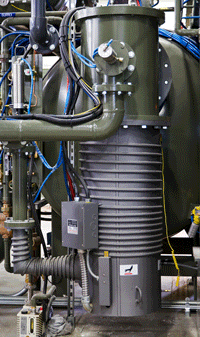 Gram mole – A measure of the mass of gas in a given sample. A gram mole contains approximately 6×1023 molecules.
Gram mole – A measure of the mass of gas in a given sample. A gram mole contains approximately 6×1023 molecules.
Halide leak detector – A leak detector using Halide gas as a tracer gas.
Hardening – A process that increases the hardness of a material by suitable treatment usually involving heating and cooling. Other common names and related subjects are: neutral hardening, quench hardening and direct hardening.
Hearth – A support platform or mechanism upon which a workload is placed for processing.
High vacuum – 10-3 to 10-6 torr
Hot zone – The internal part of the vacuum furnace into which the workload is placed for heating (and perhaps subsequent cooling). The hot zone is typically an insulated chamber containing heating elements and some type of workload support structure.
Hot wall – A style of vacuum furnace in which the exterior vacuum-vessel wall is cooled without the use of a liquid medium. Alternately, a vacuum vessel that is placed inside an insulated furnace and heated by an external source.
Ideal gas – A gas that obeys Boyle’s Law and has zero heat of free expansion (Charles’ Law). It is also known as a perfect gas.
Ideal Gas Law – A mathematical expression for the relationship exhibited by any gas showing ideal gas behavior. This relationship is expressed by the formula PV = nRT; where P is pressure, V is volume, n is the number of moles of the gaseous species, R is the ideal gas constant and T is the temperature.
Impedance – The reciprocal of the conductance. It is also called resistance.
Implosion – The rapid inward collapsing of the walls of a vacuum system or device as the result of failure of the walls to sustain the external atmospheric pressure.
Inert Gas Processing – The heat treatment of a component in a furnace atmosphere which will not react with the material being processed. Inert gases are argon and helium. Nitrogen is not a truly inert gas, reacting with certain materials (e.g. stainless steels) at elevated temperatures.
Ion-Getter pump – A pump that combines the operating principles of the getter pump and the ion pump. Molecules are ionized and attracted to an active-metal cathode, where they are buried and “sputter” active metal molecules onto the system walls. The active metal thus sputtered getters gas.
Inlet pressure – The total pressure measured at the inlet of a vacuum pump.
Inline trap – A trap placed in a vacuum line.
Ionization gauge – A vacuum measurement gauge containing a hot tungsten filament that is used to measure vacuum pressure below about 10-3 torr. Available in hot- or cold-cathode configurations.
Kinetic theory – A mathematical theory that explains gas behavior.
Leak (actual) – An opening or porosity in the wall of a vacuum system.
Leak (virtual) – A source of gas or vapor within the system which gives an indication similar to an actual leak.
Leak detection – a process by which a leak can be detected in a vacuum system by one of a variety of methods, the most common of which in heat treating is by use of a helium mass spectrometer.
Leak detector – An instrument that is sensitive to a tracer gas, used in leak hunting.
Leakage rate – The rate of gas flow through a leak or outgassing; pressure rise per unit time.
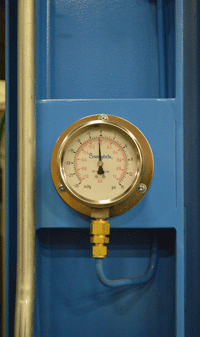 Liquidus – The lowest temperature at which a metal or alloy is completely liquid.
Liquidus – The lowest temperature at which a metal or alloy is completely liquid.
Low (rough) vacuum – Vacuum range from 1 torr to 10-3 torr.
Mass flow rate – Sometimes called throughput. The amount of gas flowing past a given point per unit time. The mass flow rate (designated Q) is proportional to the mass of gas flowing past the point per unit time.
Mass spectrometer leak detector – A modified form of the mass spectrometer, used in leak hunting.
Materials science – The science and technology of materials. Metals and nonmetals are included in this field of study.
Maximum permissible inlet pressure – Highest pressure at which a pump can operate.
Maximum tolerable foreline pressure – Highest pressure against which a pump can exhaust.
McLeod gauge – A mercury-level vacuum gauge that measures the pressure in a vacuum system.
Mean free path – The average distance a gas molecule can travel before colliding with another gas molecule. The mean free path is dependent on the density of the gas and the diameter of the molecule.
Mechanical booster pump – A rotary mechanical pump that operates on the principle of the Roots blower.
Mechanical (wet) pump – A pump that moves the gas by the cyclic motion of a system of mechanical parts such as pistons, eccentric rotors, vanes, screws, valves, etc.
Metallurgy – A domain of materials science that studies the physical and chemical behavior of metallic elements. This is an all-inclusive definition that includes the study of processes involving the operation of various furnaces, the forging and rolling of steel, foundry operations, electrolytic refining of metals, sintering of metal powders, welding and heat treating.
Micron (of mercury) – Unit of pressure equal to 0.001 torr or 1 micron Hg. It is also known as a millitorr.
Millimeter of mercury – A unit of pressure (mm Hg) defined as that pressure that will support a column of mercury 1 millimeter high.
Molecular flow – A gas flow regime that occurs at low pressures and that is characterized by its relative randomness.
Multi-chamber – A style of vacuum furnace that consists of more than one chamber in which the processing cycle is conducted. Load movement between chambers is involved. A typical example would be a furnace in which the heating and cooling aspects of the cycle are conducted in separate chambers.
Needle valve – A valve with a needle-shaped disk.
Nitriding – Introducing nitrogen into a solid ferrous alloy by holding below the critical (Ac1) temperature in contact with a suitable nitrogenous material, which may be solid, liquid or gas. Quench hardening is not required to produce a hard case. Other common names and related subjects include case hardening and ion/plasma nitriding.
Nitrocarburizing (ANC or FNC) – A case hardening process, similar to nitriding, involving the introduction of nitrogen and carbon into a solid ferrous alloy by holding either above (Austenitic Nitrocarburizing) or below (Ferritic Nitrocarburizing) the lower critical temperature (Ac1) in contact with a suitable nitrogenous and carbonaceous material. A thin nitrogen and carbon enriched layer, possibly with accompanying carbonitrides and nitrides is produced. The compound layer (a.k.a. white layer) with an underlying diffusion zone contains dissolved nitrogen and iron (alloy) nitrides. Quenching is not required to produce a hard case. Other common names and related subjects include case hardening, ferritic nitrocarburizing (FNC) and austenitic nitrocarburizing (ANC).
Non-condensable gas – Permanent gases inside a vacuum system; not to be confused with vapors.
Normalizing – Heating a ferrous alloy to a suitable temperature above the transformation range (and typically above the suitable hardening temperature) and then cooling in air to a temperature substantially below the transformation range. Still, air cooling in vacuum is typically accomplished using a 1 -2 bar nitrogen gas pressure quench to develop a cooling rate of 22ºC/min (40ºF/minute).
Oil quenching – A quenching process that rapidly cools the workload using a low vapor-pressure oil.
Oil separator – An oil reservoir with baffles to reduce the loss of oil by condensation in the exhaust of a mechanical vacuum pump.
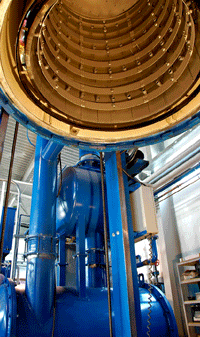 Organic vapors, seals, etc. – Refers to organic (carbon-containing) compounds such as rubber, plastic, and oil.
Organic vapors, seals, etc. – Refers to organic (carbon-containing) compounds such as rubber, plastic, and oil.
Outgassing – The escape of gas from materials within a vacuum system. It can be a limiting factor in the ultimate pressure obtained.
Partial pressure – The pressure due to a gas or vapor component of a gaseous mixture when introduced into a vacuum vessel.
Phase – A state of matter – solid, liquid, or gas.
Plasma – A completely ionized gas.
Poiseuille’s Equation – An equation for determining the rate of gas flow in the viscous flow regime.
Poppet valve – A valve in which the disk forms a kind of baffle.
Pressure – The force per unit area a gas exerts. Common units are torr, millibar, microns, psia or millimeters of mercury.
Process – The operation for which the vessel is evacuated.
Pump-down curve – A graph representing the relationship between pressure and time. It is used to determine the time required to achieve the desired operating pressure in a system with a given pump.
Pump-down time – The time needed to pump from a given pressure to another given pressure.
Pump speed – The volumetric flow rate measured at the pump inlet; designated Sp.
Pumping speed – The volume of gas per unit of time that the vacuum pump is able to remove from the system. Pumping speed is often expressed in CFM (cubic feet per minute), L/M (liters per minute) or L/S (liters per second).
Pumping system – The combination of vacuum pumps used to reduce the pressure inside the vacuum vessel from atmospheric pressure to processing pressure. A vacuum pumping system usually consists of one or more of the following pumps alone or in combination, namely a mechanical pump(s), booster (or blower) pump(s) and a diffusion pump(s) along with appropriate valving and controls.
Quenching – The process of rapidly cooling a heat-treated component from processing temperature in a suitable medium, including, most commonly oil or high-pressure gas.
Rate of rise – The timed rate of pressure increases during a given interval in a vacuum system that is isolated from the pump by a valve.
Resistance – The impedance a connecting passage presents to gas flow. Defined as Z = (p1 – P2)/Q.
Roots blower – A rotary blower pump that has a pair of rotating impellers. This type of pump is usually used in conjunction with a mechanical or backing pump to increase the pumping speed of a vacuum system over a certain pressure range.
Roughing time – The time required to pump a given system from atmospheric pressure to the crossover (cut-in) pressure for a vapor pump or other medium or high-vacuum pump.
Rough vacuum – 760 torr to 1 torr
SCFM – Standard cubic feet per minute. The volume flow referenced at standard conditions, sea-level pressure (1013 mbar/760 torr) and 20°C (68°F).
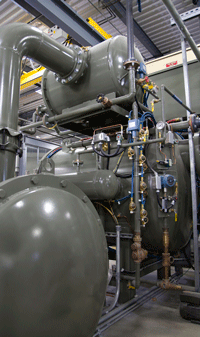 Setting the braze – A term used to describe an intermediate cooling step whereby the filler metal is allowed to cool to a semi-stable (liquid/solid) phase prior to the onset of rapid cooling.
Setting the braze – A term used to describe an intermediate cooling step whereby the filler metal is allowed to cool to a semi-stable (liquid/solid) phase prior to the onset of rapid cooling.
Single chamber – A style of vacuum furnace that consists of only one chamber in which the processing cycle is conducted. The workload remains stationary during the processing cycle.
Sintering – The bonding of adjacent powder particle surfaces in a mass of metal powders or a compact by heating. Also, a shaped body composed of metal powders and produced by sintering with or without prior compaction. Other common names and related subjects include cold/hot isostatic pressing, liquid-phase sintering and metal/powder injection molding.
Solidus – The highest temperature at which a metal or alloy is completely solid.
Sorb – To adsorb or absorb.
Sorption trap – A trap containing sorbent surfaces.
Spheroidize Annealing – A type of annealing process involving controlled heating and cooling to produce a microstructure consisting of spherical (spheroidal) carbides in a ferrite matrix.
Stage – Operating unit of a vacuum pump. By combining stages in series, a higher compression ratio can be achieved.
Standard leak – A leak of fixed, known value, used to calibrate a leak detector.
S.T.P. (Standard Temperature and Pressure) – 0ºC and atmospheric pressure.
Stress Relief – A process consisting of heating to a suitable temperature, holding long enough to reduce residual stresses, and then cooling slowly enough to minimize the development of new residual stresses.
Temperature – A measure of relative hotness or coldness. Temperature is usually measured in degrees Fahrenheit (ºF) or degrees centigrade (ºC), or degrees absolute (K).
Tempering – A heat-treating process primarily used to bring the metal to slightly lower hardness while improving ductility. Reheating a quench-hardened or normalized ferrous alloy to a temperature below the transformation temperature and then cooling at any rate desired. A reduction in strength and increase in ductility of the material generally results. Other common names and related subjects include draw, drawing, and temper.
Thermal conductivity – A measure of the ability of a substance to conduct heat.
Thermocouple (T/C) – A device that measures temperature by the proportional change in electromotive force (EMF) generated by the junction of two dissimilar metal wires. Examples of thermocouple types include S, R, K, N, and J.
Throughput – The quantity of gas in pressure-volume units at a specified temperature flowing per unit of time across an open cross-section of a pump or pipe line.
Time of evacuation – The time required to pump a given system from atmospheric pressure to a specified base pressure. It is also known as pump-down time or exhaust time.
Total pressure – Sum of all the partial pressures in a gas mixture.
Torr – A unit of pressure defined as 1/760th of an atmosphere and equal to 1 mm of mercury.
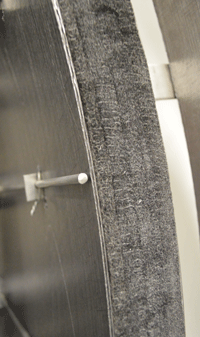 Trap – An accessory used to condense vapors present in the vacuum.
Trap – An accessory used to condense vapors present in the vacuum.
Turbulent flow – A gas flow regime characterized by the disparity between an individual molecule’s velocity and the net gas velocity.
Ultimate pressure – The lowest attainable pressure in a vacuum system. In a vacuum pump, the lowest pressure that can be attained with that pump. Ultimate pressure is limited by the pumping speed of the vacuum pump and the vapor pressure of the sealing fluid, among other factors.
Ultrahigh vacuum – 10-6 (Europe) or 10-7 to 10-10 torr (U.S.)
Vacuum – A space filled with gas at a pressure less than atmospheric pressure. Vacuum is classified as rough, low, high, very high and ultrahigh.
Vacuum cooling – A process for lowering the temperature of a material by subjecting it to vacuum conditions to cause vaporization of a liquid.
Vacuum drying – The removal of liquid by evaporation from a substance in a vacuum. When the liquid is water, the process is sometimes called vacuum dehydration.
Vacuum gauge – Any instrument used to measure pressure in a vacuum system. Examples include manometers, diaphragms, thermocouples and Pirani and McLeod gauges.
Vacuum manifold – Part of the vacuum-system piping; an enclosure with ports so that a number of vacuum processes can be operated simultaneously.
Vacuum pump – A pump which can produce a vacuum in a vessel by either removing gas molecules or changing their phase.
Vacuum system – A system designed for the manufacture of a product or the operation of a process. Consists of a vacuum pump or pumps, vacuum chamber, interconnecting piping and a variety of other components.
Vacuum vessel – The main chamber that houses the hot zone, workload, and support components. It is evacuated prior to running a metallurgical process.
Vapor – A substance in the gas phase that is condensable at ambient temperatures.
Vapor pressure – The partial pressure exerted by a vapor.
Vapor pump – A vacuum pump that pumps by means of a directed stream of vapor.
Very high vacuum – 10-6 torr to 10-9 torr.
Viscous flow – A gas flow regime characterized by its smoothness and order.
Volume – A measure of space. In vacuum work, volume is measured in cubic feet (ft3) or in liters (L).
Volumetric flow rate – Volume of gas flowing past a given point per unit time; designated S.
Wetting – The phenomenon in which a liquid filler metal or flux spreads or flows and adheres in a thin, continuous layer on a solid base metal.
Wilson seal – A motion seal made by an elastomer washer fitted snugly over a shaft.
